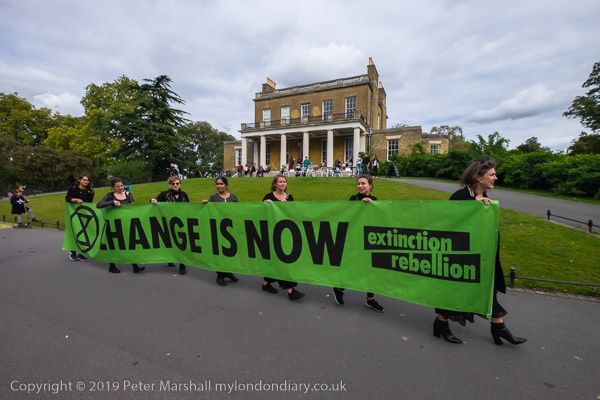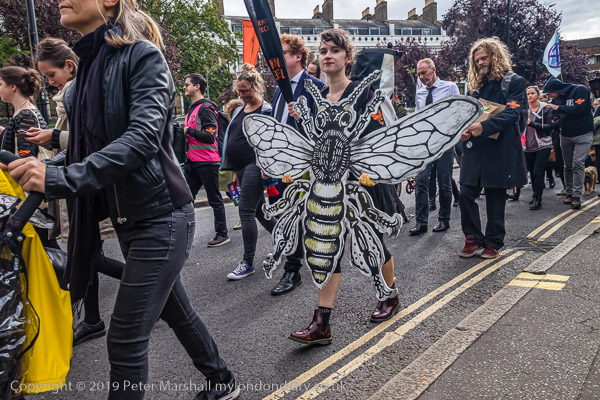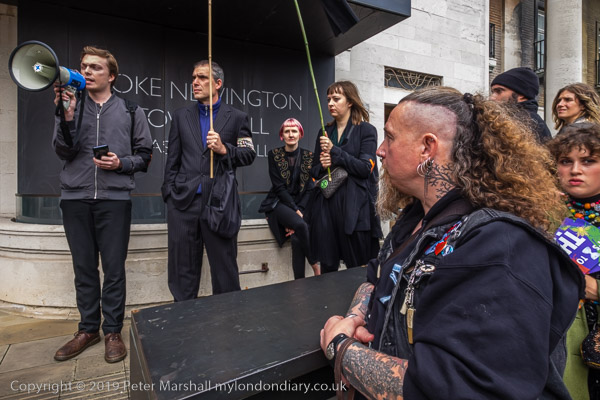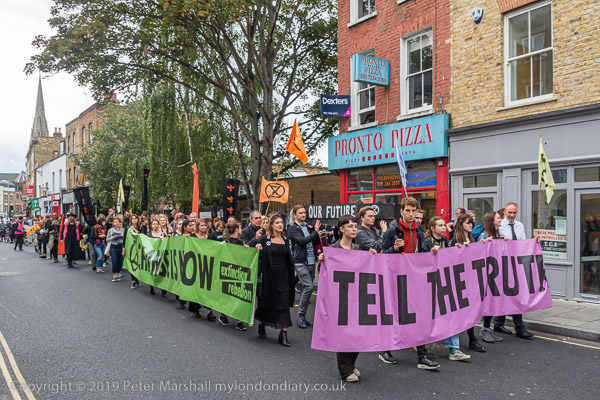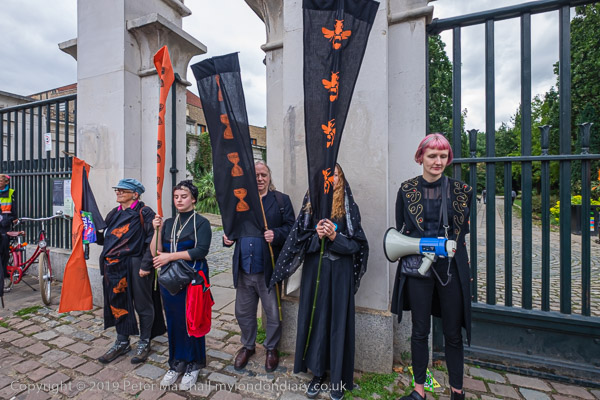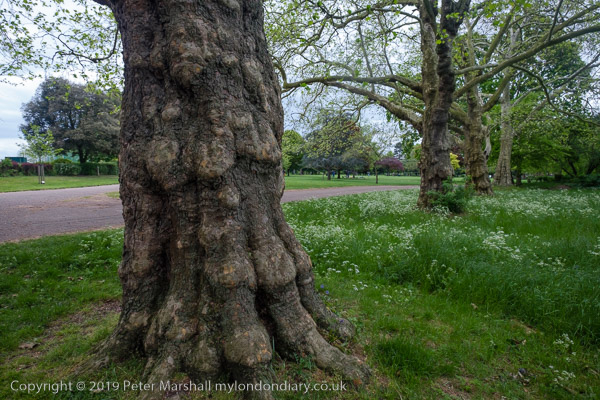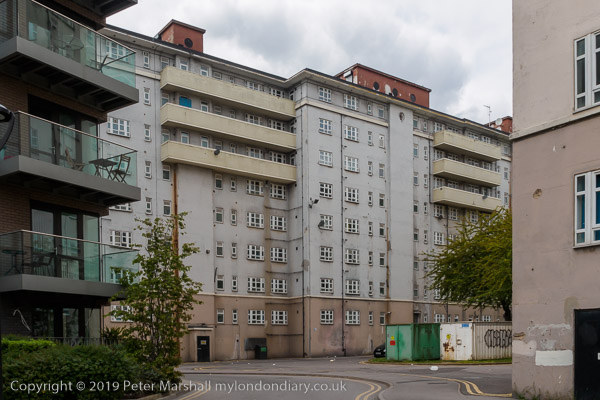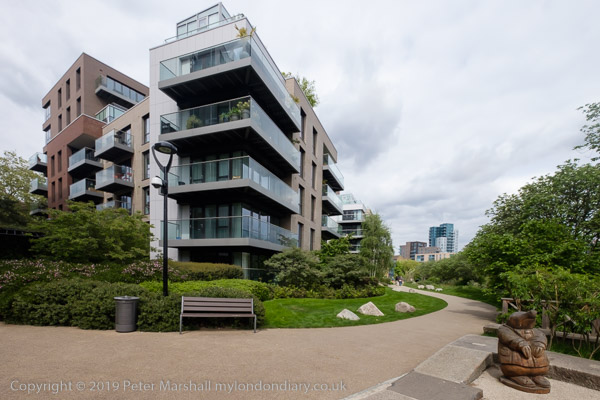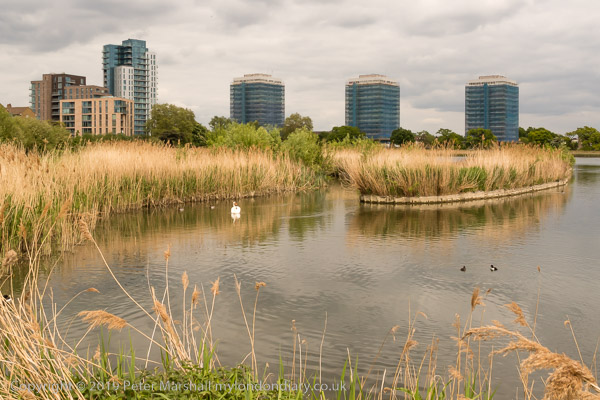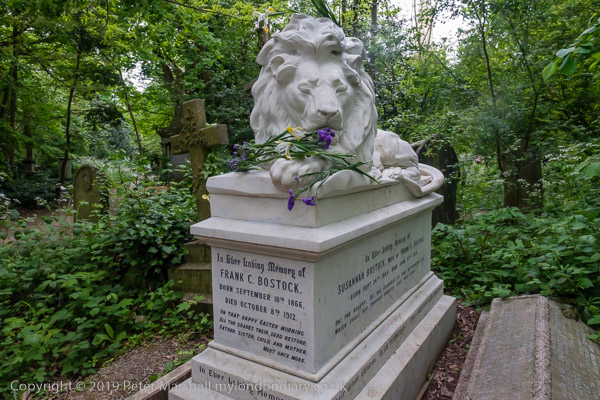Cemetery, Synagogue & Snooker continues my walk on Sunday 8th October 1989 which had begun at Seven Sisters Station. The previous post Stoke Newington Shops – 1989 had ended with me opposite the gates of Abney Park Cemetery, which I had visited on a walk the week before, Abney Park & South Tottenham, and I wrote more about the cemetery there.
The cemetery has a huge assortment of memorials and I photographed a few of them, including this angel, perhaps a fairly typical depiction, with similar angels in memorials across the country. It also gives an idea of the wilderness which the cemetery had become by 1989.
Another angel erected by a husband in sacred memory of his wife Elizabeth who “departed this life” only 28 years old in 1865. This is a rather more unusual monument and I wondered if it might perhaps resemble this young woman who may well like many of the time have died in childbirth. There are two cherubs on the plinth and below them a rather strange pipe with perhaps shoots emerging at both ends. I suspect someone may know the significance of this. I cannot quite make out the name of her husband, although someone had clearly removed the creeper from the stone in order to reveal it.
The text on the monument at the right of this picture is clear, and this is the Grade II listed memorial to John Swan (1787-1869), the inventor of the screw propellor for use on ships, and also of the self acting chain messenger which apparently saved the nation around £70,000 a year, for which he “never received the slightest remuneration.”
I took around 20 pictures in the cemetery and have only digitised seven of them – you can find four not included in this post on Flickr.
Built as a Primitive Methodist Chapel in 1875, this building was bought by members of the Beth Hamedrash Ohel Yisrael Synagogue as “more suitable and commodious premises” than their previous synagogue at 46 Brooke Rd in 1953 and consecrated in 1955. It became known as Beit Knesset Ohel Yisrael or Northwold Road Synagogue.
The synagogue closed the month before I made this picture. The building at 16 Northwold Road became the Sunstone Women Only Gym and is now the Tower Theatre.
Northwold Road begins opposite Abney Cemetery gates and its first secition still includes a number of interesting buildings as well as the former synagogue, but these on the north side of the road opposite it have been replaced by a large grey six-storey block of housing.
The flats at right re a part of the George Downing Estate on Alkham Road and are on the other side of the railwa line.
Grade II* listed along with its neighbours 189 and 191, this is part of what the listing text describes as “an Early C18 large scale composition of 3 houses, the centre one projecting, touching at corners”. (It actually says proecting, but this building has a large yard in front and 189 has its porch almost on the street,)
This house was built in 1712 for Silk merchant John Wilmer (1696-1773), a wealthy Quaker. It later became ‘The Invalid Asylum for the Recovery of the Health of Respectable Women’. Substantially rebuilt in 1983 it is now the Yum Yum Thai Restaurant.
Hard to remember why I cropped this so tightly as to remove the S from Snooker and the SLI of Slindon Court, but probably it was just to make what I felt was a more satisfactory composition. I had previously photographed this in colour with a slightly wider view.
Slindon Court is now the entrance to a gated mews development behind the shops here.
The final post on this walk is still to come.
Flickr – Facebook – My London Diary – Hull Photos – Lea Valley – Paris
London’s Industrial Heritage – London Photos
All photographs on this page are copyright © Peter Marshall.
Contact me to buy prints or licence to reproduce.








